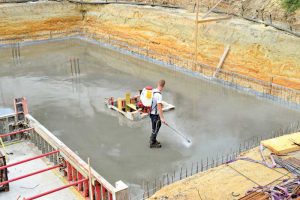
By Dean E. Craft, DBA, CSI, CDT, CCCA, ASTM, ACI, LtCol USMCR (ret.)
Proper concrete curing methods are critical for achieving the overall strength, durability, performance, and aesthetics of concrete. It is directly related to reducing maintenance costs, extending service life, and enhancing the sustainable attributes of concrete. Unfortunately, despite the relatively low cost of effective curing practices, this step is often overlooked or minimized. Failing to give curing the required level of attention can lead to failed expectations, expensive repairs, and delayed project timelines.
One might wonder, if the importance of proper curing is so well-documented, why is the process marginalized or even skipped? Part of the reason is confusion around the definition of “curing.” Few terms associated with concrete have been so misused, misinterpreted, or misquoted as the term “curing.” Many associate this term with the overall strength gain of concrete and believe the process takes 28 days. Others believe 28 days is the amount of time needed before a moisture-sensitive flooring, roofing material, or coating can be applied to a concrete substrate surface. Unfortunately, neither of these are completely accurate and this misconception routinely leads to confusion and frustration on projects. To accurately understand what curing means, it is necessary to turn to published literature. A quick review gives two different descriptions.
According to the American Society for Testing and Materials (ASTM) international, ASTM C125, Standard Terminology Relating to Concrete and Concrete Aggregates and the American Concrete Institute (ACI), CT-13: ACI Concrete Terminology, curing is defined as an “action taken to maintain moisture and temperature conditions in a freshly placed cementitious mixture to allow hydraulic cement hydration and (if applicable) pozzolanic reactions to occur so that the potential properties of the mixture may develop.”
ACI 308R-16: Guide to External Curing of Concrete incorporates the above definition and states, “a mixture is properly proportioned and adequately cured when the properties of the in-place concrete equal or exceed the design properties of the concrete.” Further, the document points out the term “curing” has been “used in a more general sense to describe the process by which hydraulic cementitious concrete matures and develops hardened properties over time as a result of the continued hydration of the cementitious materials in the presence of sufficient water and heat.”
Though seemingly similar, there are some key differences between the two. The definition of curing says “curing” is an “action taken,” meaning curing can, and should, be specified, scheduled, planned for, observed, and evaluated. Also, it uses the term “freshly placed cementitious mixture,” shifting focus to when curing should take place, which is from the time of placement until the desired concrete properties develop.




